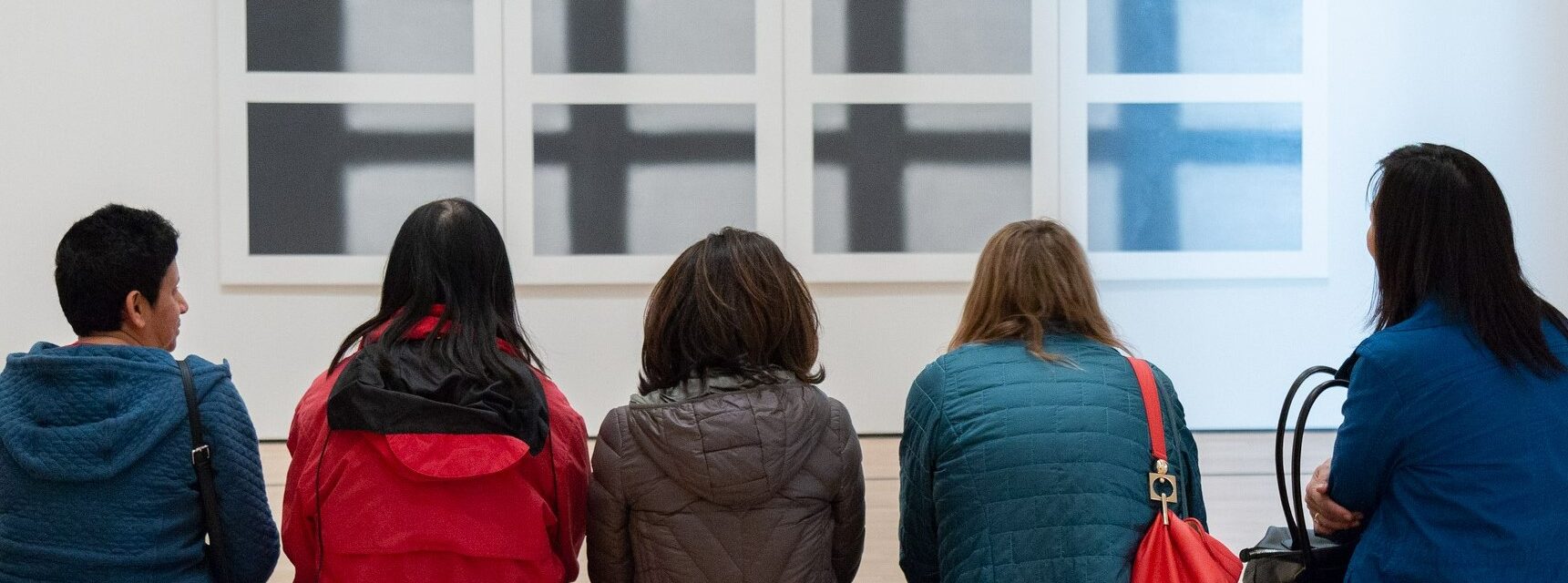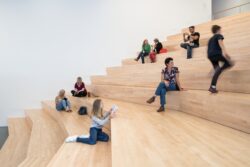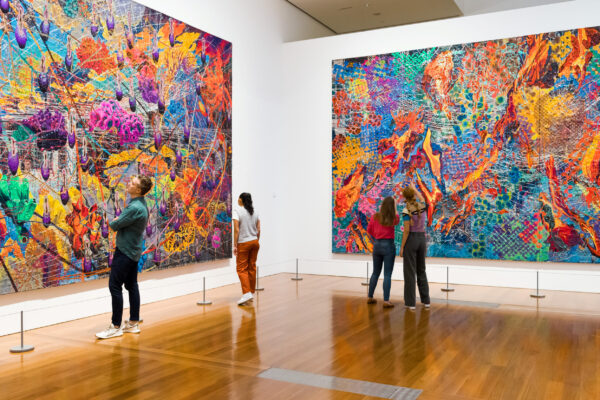- What We Do
- Understanding your audience
- Engaging new audiences
- Designing experiences
- Building loyalty
 Case studies
Case studiesSFMOMA: plugging Visitor 360° research into a data-driven organization
We’ve had the pleasure of working with SFMOMA for seven years now – since they re-opened in a new building in 2015. In that time, we have collaborated on providing insight to inform planning for a number of different teams – from exhibition marketing, to membership strategies, to evaluating public engagement.
As a data-driven organization, SFMOMA values the opportunity to listen to audiences and make evidence-based decisions. At the core of our partnership however has been our Visitor 360° – an ongoing year-round visitor research project that gives a complete, accurate answer to the ever-present questions ‘who are our visitors?’
Confidence in understanding visitors
The Visitor 360° is a 5-7 minute questionnaire designed to gather data from visitors specifically to understand the audience and monitor trends for the most useful KPIs.
- Who is visiting? (demographics, previous visits and Culture Segments)
- What prompted them to visit? (marketing and motivations)
- How was their experience? (what they did, what they thought)
- What was the impact of a visit for them? (outcomes, SFMOMA brand perceptions)
The survey is included in a post-visit email throughout the year to account for seasonality. We weight the data to match visit flow, balance walk-ups vs pre-visit purchase, members vs non-members, adult-only vs family group visits. We apply a range of methods to ensure the picture we’re presenting is as accurate as possible.
Consistent valuable insight through times of change
Like many cultural organizations, the last few years have brought many changes for SFMOMA. In a time of uncertainty, consistent, reliable data is more valuable than ever. Throughout the pandemic and recovery, we’ve been able to track the response of the audience – who came back first, how safe did they feel, what had they missed – and now we’re able to see where visits are returning to pre-pandemic levels and where there is still work to do to re-ignite relationships.
For example, in 2022 we saw that two core groups seemed to still be ‘missing’ from the audience compared to 2019. The first was tourists, which is of course to be expected as general tourism to the Bay Area was still in recovery and there is largely outside of the Museum’s control. But the second was locals – specifically younger, Expression (shared experience and community-oriented) casual ‘drop in’ visitors. This gave SFMOMA direction on where to focus efforts most effectively to rebuild audiences.

Photo by Henrik Kam. Image courtesy of SFMOMA.
Ability to evaluate the real impact of strategies
Because of course the museum has not been passively waiting for recovery to happen. They took the opportunity to reflect and renew their intent and make meaningful changes. They honed in on their commitment to their mission of Connecting People to the Art of Our Time.
But how do they know if (and how and why) it’s working?
Going forward, we can track the results of their efforts. Has the big Expression campaign to re-engage locals resulted in growth from this audience? Has local targeting connected with the audiences closest to the Museum? Did our new campaign actually invite in new audiences for the first time? Did this exhibition reach a more diverse audience as we’d hoped? How consistently are we delivering the outcomes we hope for visitors?
V360° is not just about having an accurate picture of the audience once, but about being able to confidently track changes and the impacts of action taken.
All images courtesy of SFMOMA:
Top: Gerhard Richter, Fenster (Window), 2002, The Doris and Donald Fisher Collection at the San Francisco Museum of Modern Art © Gerhard Richter. Photo by Don Ross.
Middle: Photo by Henrik Kam.
You may also like
Learn moreNY Phil Case Study: Taking audience understanding to the next level
NY Phil Case Study: Taking audience understanding to the next level
Learn moreState Library Victoria Visitor 360°
How MHM has worked with State Library Victoria to better understand its audience through Visitor 360° research, helping the Library develop a deep understanding of its visitors, and allowing it to tailor the services and activities it provides accordingly.
 Learn more
Learn moreQueensland Art Gallery | Gallery of Modern Art Visitor 360°
How MHM has helped QAGOMA to better understand their audience through Visitor 360° research, as well as a series of bespoke projects such as exhibition evaluations, formative studies and an in-depth study exploring QAGOMA’s market using Culture Segments.
- Engaging new audiences
- Understanding your audience
